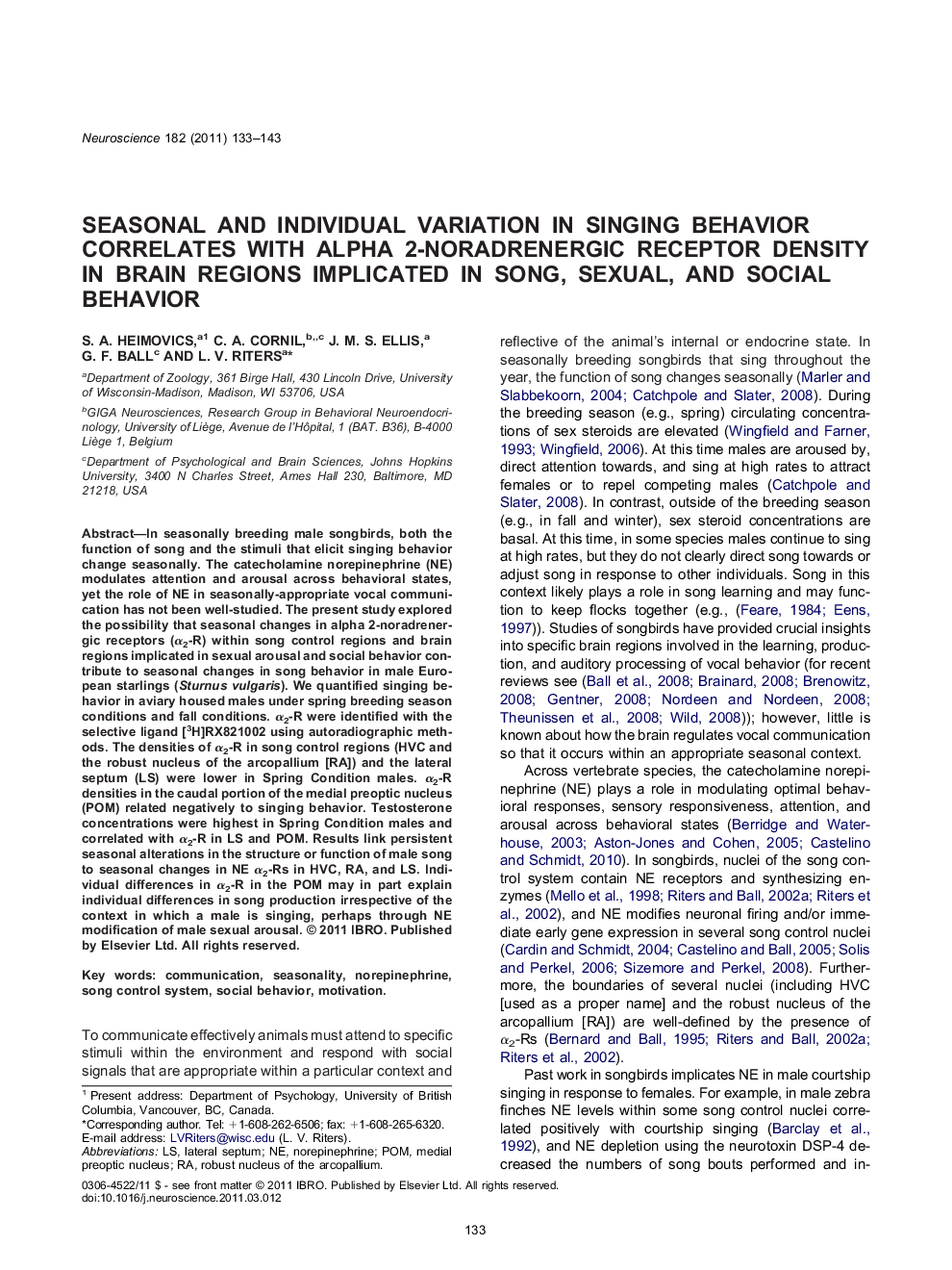| Article ID | Journal | Published Year | Pages | File Type |
|---|---|---|---|---|
| 4338966 | Neuroscience | 2011 | 11 Pages |
In seasonally breeding male songbirds, both the function of song and the stimuli that elicit singing behavior change seasonally. The catecholamine norepinephrine (NE) modulates attention and arousal across behavioral states, yet the role of NE in seasonally-appropriate vocal communication has not been well-studied. The present study explored the possibility that seasonal changes in alpha 2-noradrenergic receptors (α2-R) within song control regions and brain regions implicated in sexual arousal and social behavior contribute to seasonal changes in song behavior in male European starlings (Sturnus vulgaris). We quantified singing behavior in aviary housed males under spring breeding season conditions and fall conditions. α2-R were identified with the selective ligand [3H]RX821002 using autoradiographic methods. The densities of α2-R in song control regions (HVC and the robust nucleus of the arcopallium [RA]) and the lateral septum (LS) were lower in Spring Condition males. α2-R densities in the caudal portion of the medial preoptic nucleus (POM) related negatively to singing behavior. Testosterone concentrations were highest in Spring Condition males and correlated with α2-R in LS and POM. Results link persistent seasonal alterations in the structure or function of male song to seasonal changes in NE α2-Rs in HVC, RA, and LS. Individual differences in α2-R in the POM may in part explain individual differences in song production irrespective of the context in which a male is singing, perhaps through NE modification of male sexual arousal.
▶Past data show that the function of song differs seasonally in starlings. ▶α2 noradrenergic receptors in HVC, RA and LS are densest in Fall Condition males. ▶α2-receptors in the medial preoptic nucleus correlate negatively with song behavior. ▶Testosterone relates to seasonal changes in song and α2-receptor densities. ▶Changes in α2-receptors may underlie seasonal and individual differences in song.
